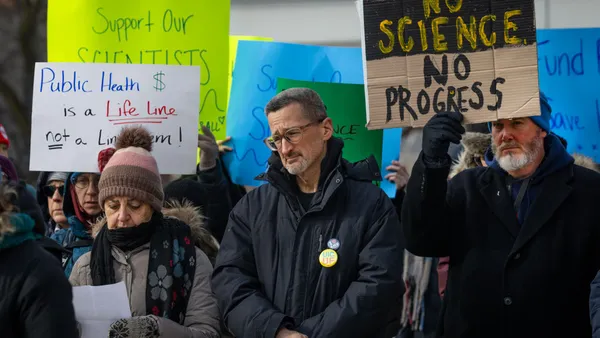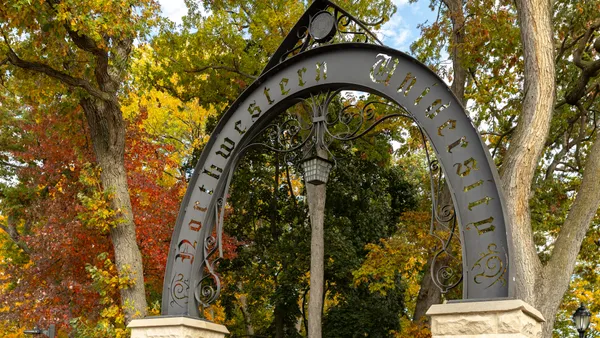Dive Brief:
- Nearly half of Universities of Wisconsin campuses are projected to have structural deficits in the 2025 fiscal year, according to budget documents presented to the system’s board last week.
- Six out of 13 of the system’s campuses are expected to have ongoing expenses that exceed their recurring revenue. However, this marks an improvement from the previous fiscal year’s budget, which reported structural deficits at 10 campuses.
- Universities of Wisconsin System President Jay Rothman noted during a board meeting Thursday that some of the institutions projecting deficits still need to “effect some substantial budget reductions.” But he also stressed that state lawmakers must increase their investment into the system.
Dive Insight:
The Universities of Wisconsin system has sought to reduce or eliminate structural deficits across its campuses. Yet the system’s institutions are still grappling with major expected shortfalls in the coming years amid enrollment and retention challenges.
The projected operating deficits range from roughly $509,000 at University of Wisconsin Whitewater to $8.6 million at University of Wisconsin Oshkosh. Altogether, the structural deficits total $16.4 million across the system, down from $54.6 million reported the previous year’s budget.
The system has drastically cut budgets across campuses to reduce the deficits. University of Wisconsin Parkside, for instance, cut about 10% of its workforce last year to help alleviate a multi-million dollar budget gap.
At UW-Oshkosh, the situation is especially dire. It laid off more than 140 employees last year and kept 34.5 vacant positions unfilled. Another 76 workers accepted retirement or buyout offers.
But the university has still exhausted its unrestricted reserves and has a projected cash shortfall of $7.6 million — a first in the system’s history, Universities of Wisconsin Regent Ashok Rai told the board Thursday. The Universities of Wisconsin plans to cover UW-Oshkosh's cash shortfall through an interest-bearing loan from its system reserves.
Rothman noted that fall enrollment will play a large role in determining whether the system meets its revenue projections. “The FAFSA debacle is creating yet another obstacle for us,” he added.
The system has struggled with declining enrollment for years. Total enrollment across the system fell nearly 10.7% from its peak in 2010 to about 163,000 students in fall 2023, according to Universities of Wisconsin data. However, the latest enrollment represents a roughly 1.1% increase from fall 2022.
The system is also grappling with relatively low state support. Wisconsin gave $6,693 per full-time equivalent student attending a public four-year university in fiscal 2023, compared with the national median of $10,238, according to data from the State Higher Education Executive Officers Association.
That ranks Wisconsin as 43rd out of the 50 states and the District of Columbia for four-year higher education appropriations.
“One cannot credibly argue that the state’s investment in our public universities does not generate a substantial return on investment,” Rothman said Thursday. “And yet, our state’s support and tuition dollars rank us 43rd.”
Rothman said that it would take an additional $457 million in state support each year to bring Wisconsin up to the national average.
The following day, Wisconsin Gov. Tony Evers, a Democrat, told the Universities of Wisconsin board that he plans to request an $800 million funding bump for the system in his next biennial budget.
To pass his proposal, Evers will need support from Republicans, who control both chambers and have sparred with the governor over higher education funding.













